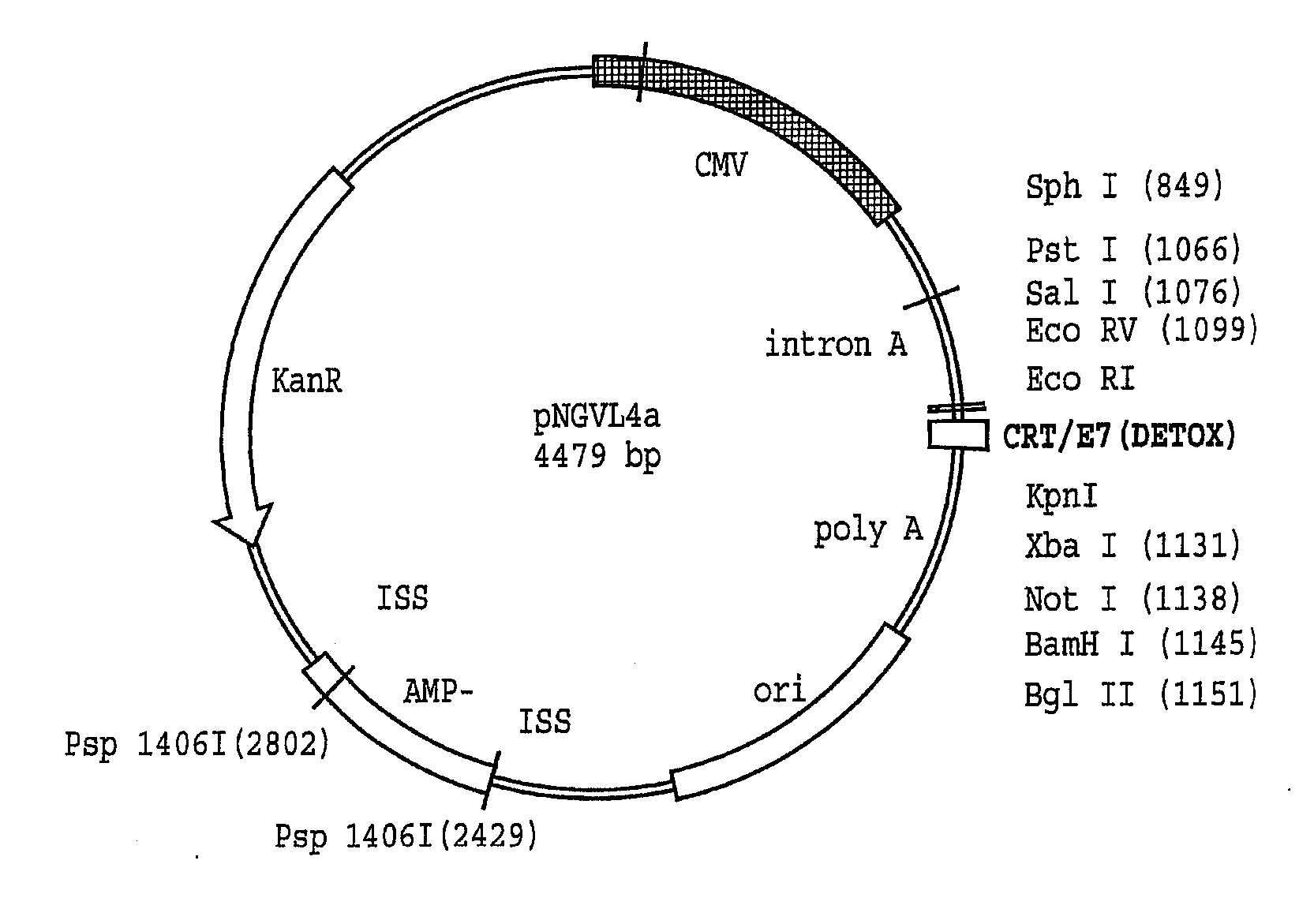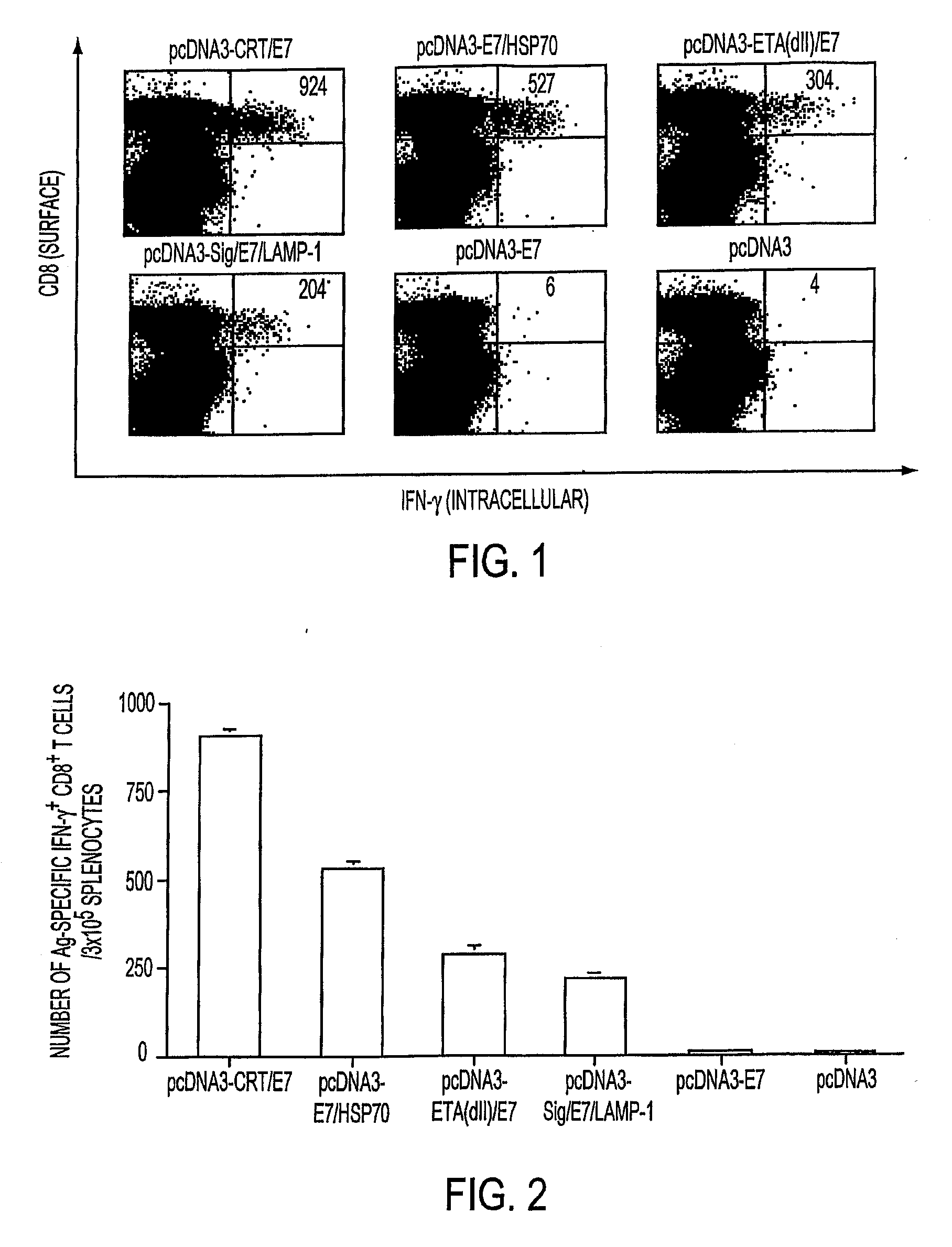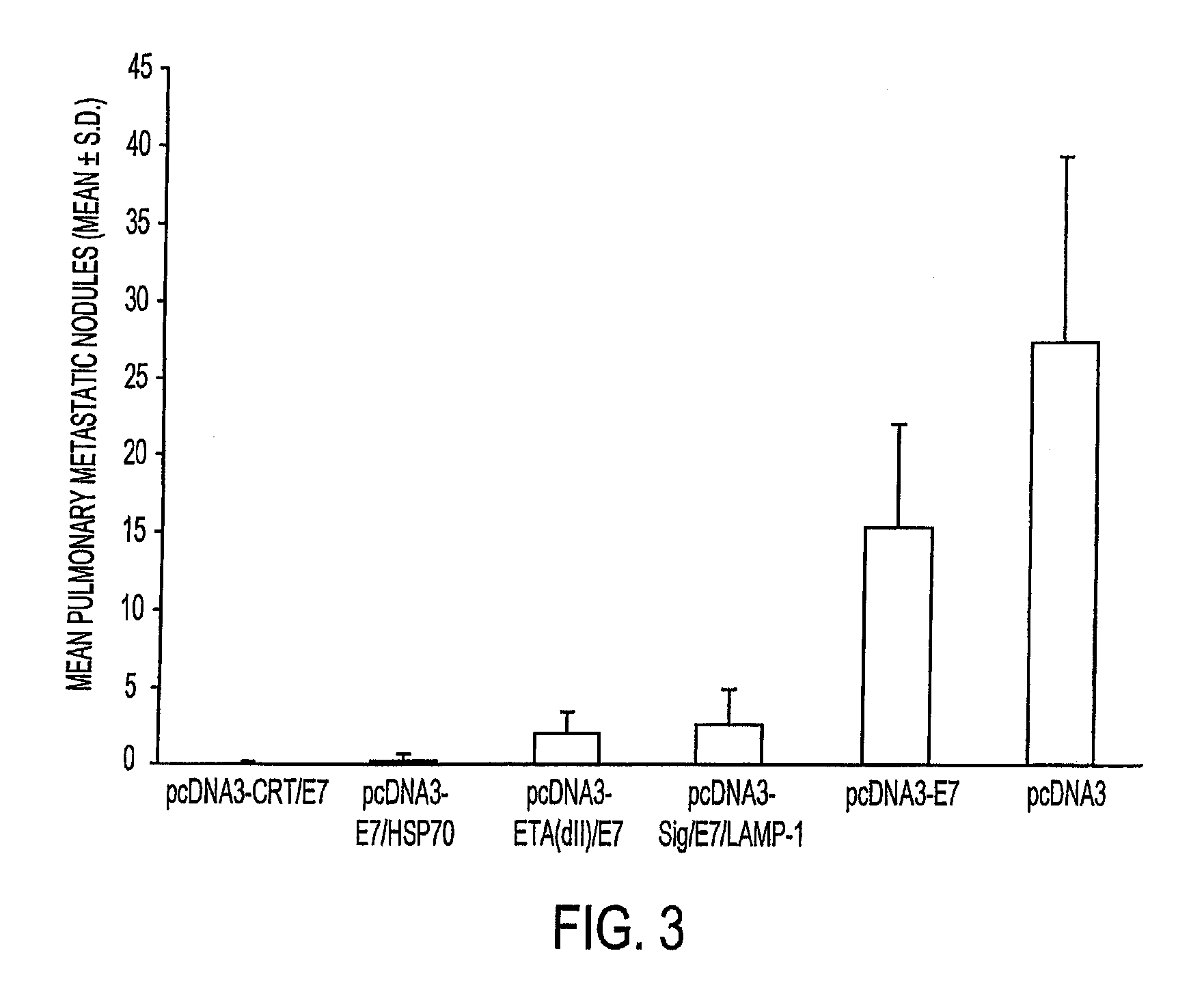Anti-cancer DNA Vaccine Employing Plasmids Encoding Mutant Oncoprotein Antigen and Calreticulin
a dna vaccine and oncoprotein technology, applied in the field of molecular biology, immunology and medicine, can solve the problems of lack of potency of vaccines, limited administration, and none of these vaccines have been ideally designed for human use, and achieve the effect of enhancing immunogenicity and promoting antigen processing
- Summary
- Abstract
- Description
- Claims
- Application Information
AI Technical Summary
Benefits of technology
Problems solved by technology
Method used
Image
Examples
example 1
Materials and Methods
Plasmid DNA Construction
[0215] The generation of pcDNA3, pcDNA3-E7, pcDNA3-CRT / E7 (Cheng et al., supra), pcDNA3-E7 / HSP70 (Chen C H et al., Cancer Res 60:1035-42, 2000), and pcDNA3-ETA(dII) / E7 (Hung C F et al., Cancer Res 2001; 61:3698-3703) has been described previously. To generate pcDNA3-Sig / E7 / LAMP-1, Sig / E7 / LAMP-1 was cut at the EcoRI / BamHI sites from pCMV(neo)-Sig / E7 / LAMP-1 (Ji H et al., Hum Gene Ther 10:2727-40, 1999) and cloned into pcDNA3.
[0216] For generation of pNGVL4a-E7(detox), the E7 gene was cloned into pNGVL4a (National Gene Vector Laboratory) using the EcoRI and KpnI restriction sites. Using site-directed mutagenesis, two point mutations, which had previously been found to reduce Rb binding (Munger K et al., EMBO J 8:4099-4105, 1989), were introduced into the E7 gene. The primers used to introduce these mutations were as follows:
E7(detox) Forward:(SEQ ID NO:21)5′ ctgatctctacggttatgggcaattaaatgacagctc 3′andE7(detox) Reverse:(SEQ ID NO:22)5′ ...
example 2
Comparative Analysis of CRT / E7 DNA Vaccine with Other IPP's Linked to E7
[0234] CD8+ T cell-mediated immune responses are important in controlling both HPV infections and HPV-associated neoplasms. To assess immune response to various DNA vectors, the frequency of E7-specific CD8+ T cell precursors generated by pcDNA3, pcDNA3-E7, pcDNA3-CRT / E7, pcDNA3-E7 / HSP70, pcDNA3-ETA(dII) / E7, and pcDNA3-Sig / E7 / LAMP-1 vaccine constructs, ICCS with flow cytometric analysis was done using spleen cells from vaccinated mice one week after the last vaccination. As shown in FIGS. 1 and 2, mice vaccinated with pcDNA3-CRT / E7 DNA exhibited the highest numbers of E7-specific IFN-γ+ CD8+ T cell precursors (per 3×105 spleen cells)—655—compared to mice vaccinated with pcDNA3-E7 / HSP70, pcDNA3-ETA(dII) / E7, pcDNA3-Sig / E7 / LAMP-1, pcDNA3-E7, or pcDNA3 (p<0.05).
example 3
Mice Immunized with CRT / E7 Vaccine Generate Potent Antitumor Responses
[0235] Therapeutic potential of the various chimeric DNA constructs were tested for treatment of an E7-expressing tumor, TC-1, using a previously described lung hematogenous spread model (Ji et al., supra). As shown in FIG. 3, mice given the pcDNA3-CRT / E7 vaccine exhibited significantly lower numbers of pulmonary nodules compared to mice vaccinated with pcDNA3 (negative control) or pcDNA3-E7 after TC-1 challenge (p<0.05). When comparing pcDNA3-CRT / E7 to pcDNA3-E7 / HSP70, pcDNA3-ETA(dII) / E7, or pcDNA3-Sig / E7 / LAMP-1 vaccines, pcDNA3-CRT / E7-immunized mice displayed lower mean numbers of pulmonary nodules than the others p<0.95).
PUM
| Property | Measurement | Unit |
|---|---|---|
| Immunogenicity | aaaaa | aaaaa |
Abstract
Description
Claims
Application Information
 Login to View More
Login to View More - R&D
- Intellectual Property
- Life Sciences
- Materials
- Tech Scout
- Unparalleled Data Quality
- Higher Quality Content
- 60% Fewer Hallucinations
Browse by: Latest US Patents, China's latest patents, Technical Efficacy Thesaurus, Application Domain, Technology Topic, Popular Technical Reports.
© 2025 PatSnap. All rights reserved.Legal|Privacy policy|Modern Slavery Act Transparency Statement|Sitemap|About US| Contact US: help@patsnap.com



